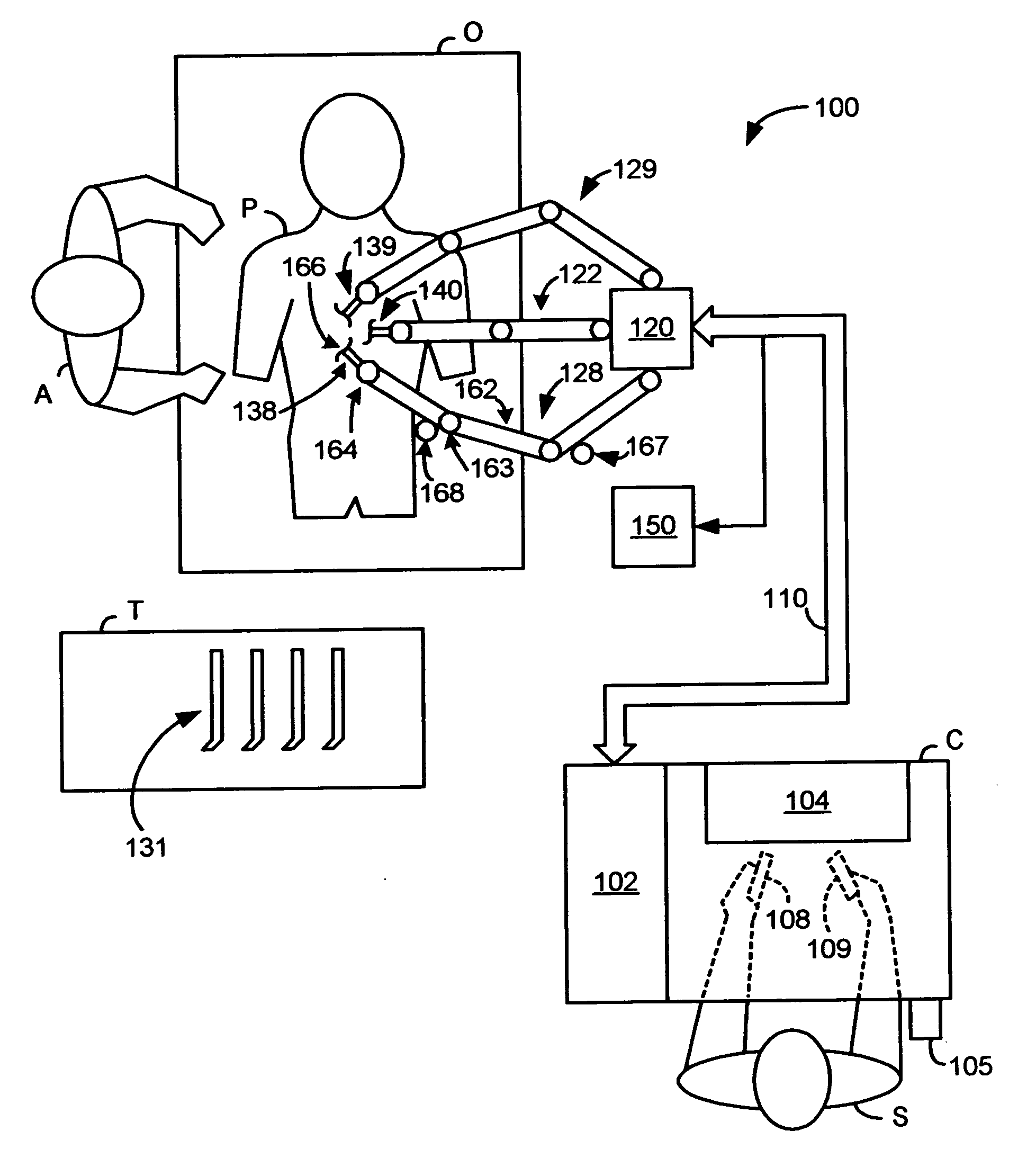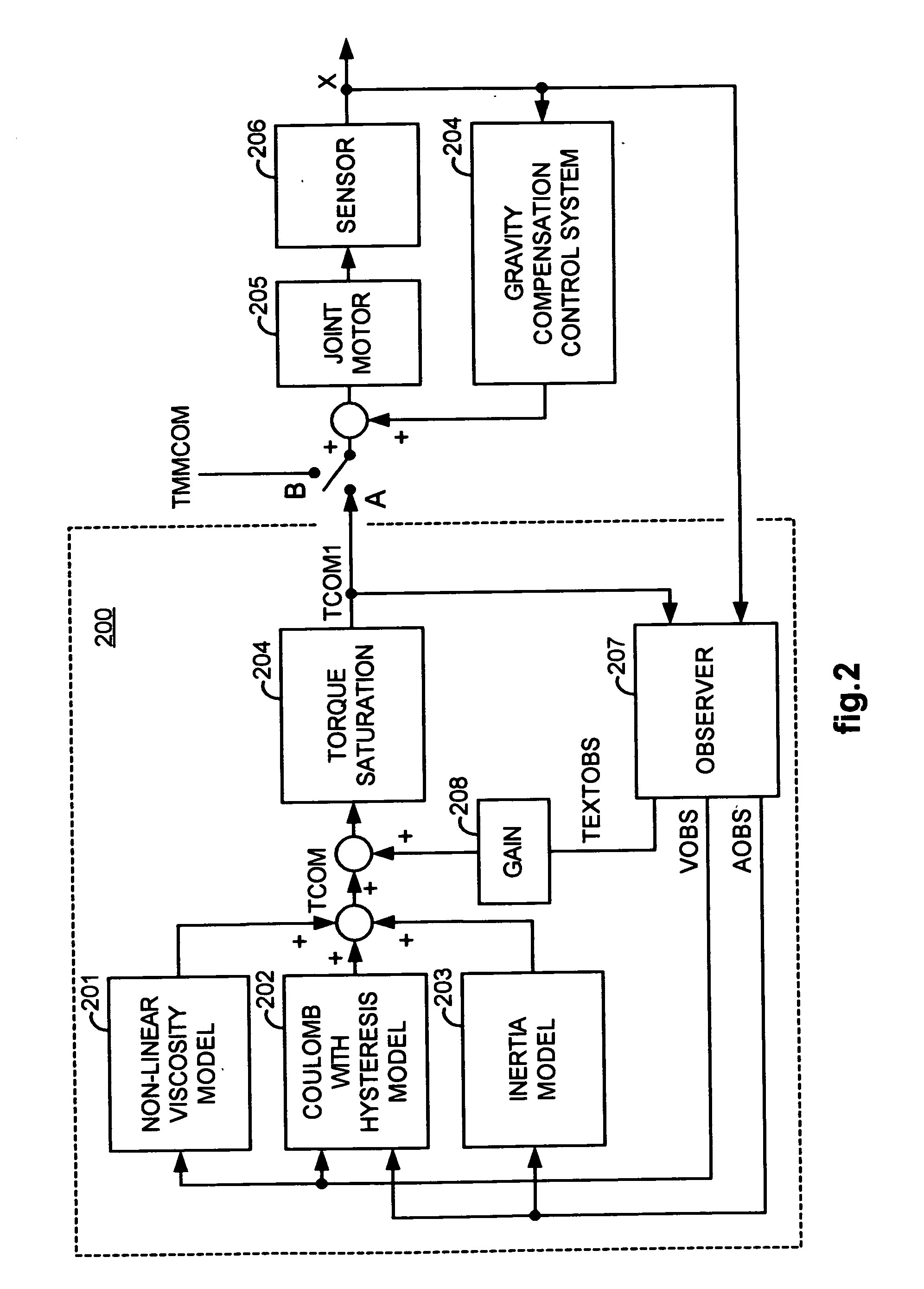Control system for reducing internally generated frictional and inertial resistance to manual positioning of a surgical manipulator
a control system and manipulator technology, applied in the field of robotic surgical systems, can solve the problems that the internal generated frictional and inertial resistance to manual movement of the slave manipulator may be objectionable to the assistant, and achieve the effect of reducing the internal generated frictional and inertial resistan
- Summary
- Abstract
- Description
- Claims
- Application Information
AI Technical Summary
Benefits of technology
Problems solved by technology
Method used
Image
Examples
Embodiment Construction
[0025]FIG. 1 illustrates, as an example, a top view of an operating room employing a robotic surgical system. The robotic surgical system in this case is a Minimally Invasive Robotic Surgical (MIRS) system 100 including a Console (“C”) utilized by a Surgeon (“S”) while performing a minimally invasive diagnostic or surgical procedure, usually with assistance from one or more Assistants (“A”), on a Patient (“P”) who is lying down on an Operating table (“O”).
[0026]The Console includes a monitor 104 for displaying an image of a surgical site to the Surgeon, one or more manipulatable master manipulators 108 and 109 (also referred to herein as “control devices” and “input devices”), and a controller 102. The control devices 108 and 109 may include any one or more of a variety of input devices such as joysticks, gloves, trigger-guns, hand-operated controllers, or the like. The controller 102 is a personal computer that may be integrated into the Console or positioned next to it.
[0027]The S...
PUM
 Login to View More
Login to View More Abstract
Description
Claims
Application Information
 Login to View More
Login to View More - R&D
- Intellectual Property
- Life Sciences
- Materials
- Tech Scout
- Unparalleled Data Quality
- Higher Quality Content
- 60% Fewer Hallucinations
Browse by: Latest US Patents, China's latest patents, Technical Efficacy Thesaurus, Application Domain, Technology Topic, Popular Technical Reports.
© 2025 PatSnap. All rights reserved.Legal|Privacy policy|Modern Slavery Act Transparency Statement|Sitemap|About US| Contact US: help@patsnap.com



